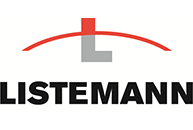|
18.04.2017 Vacuum brazing: Good to know - a short overview Why vacuum brazing? A short overview Vacuum brazing enables development engineers and production persons in charge to design and manufacture parts in a modular way. Starting with simple pre-products complex shaped parts can be realized cost-effectively and/or with minimized effort for pre- and post-machining. Given flexibility in terms of combining components with strong difference in weight, wall thickness and shape and the utilization of different materials properties in terms of function and costs can be enlarged significantly. Parts guiding gases or liquids can be realized with an internal complex channel structure. A broad range of materials is usable, starting with mild steels across high-alloyed cold and hot work steels up to super alloys. As well non-ferrous metals like copper and titanium and even ceramics, hard metals and the superhards CBN and diamond can be brazed. Using vacuum brazing no flux is required which results in strength values close to the bulk material. Even at high brazing temperatures no oxidation occurs. Today vacuum brazing is applied in many application areas, from simple mass production up to complex, heavily loaded turbine parts. Pros & Cons of vacuum brazing Vacuum brazing is characterized by versatility and flexibility by the following advantages:
Disadvantages are:
|
Liechtenstein Listemann Technology AG Listemann Technology AGOber Au 38 LI-9487 Bendern +423 375 90 10 info@listemann.com |
Switzerland Listemann AG Listemann AGSulzer Allee 25 Postfach CH-8404 Winterthur +41 52 245 18 50 info@listemann.com |
Poland Listemann Polska Sp.z o.o. Listemann Polska Sp.z o.o. ul. Biskupińska 23 PL- 30732 Kraków +48 12 6534 230 j.brelinski@listemann.com |
Legal notice | GTC |
